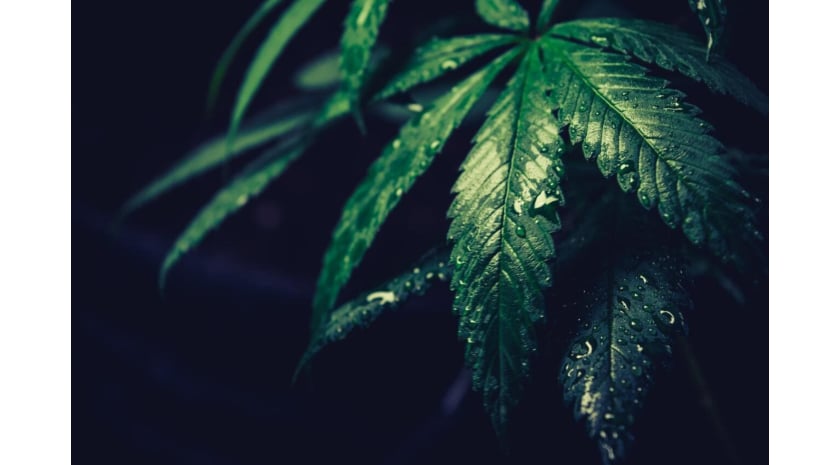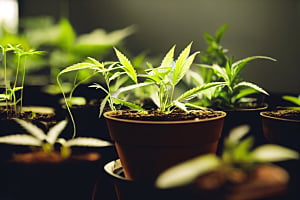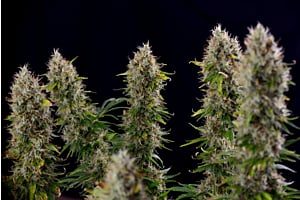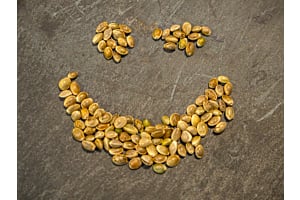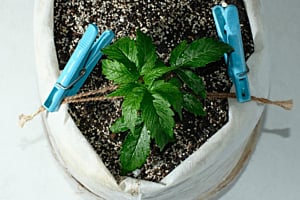The best humidity for weed makes all the difference in indoor setups. It helps plants consume much-needed water, grow large and strong, and fend off mold and mildew.
The air in my house is good for me and my houseplants, you say. Can’t my marijuana flourish with that as well? Unfortunately, the best humidity for growing cannabis sometimes isn’t what humans find comfortable. It also varies between your crops’ life stages.
Controlling this factor requires dedicated effort, but it pays. Get it right, and you’re one step closer to high yields of sticky, potent buds.
Join us to explore how humidity affects weed growth from seed to smokable buds. We’ll cover common control practices to implement, potential pitfalls, and easy solutions.
What factors affect relative humidity control for cannabis?
You need to know a thing or two about the general concept of humidity in a grow room to set up and sustain the correct levels. So, let’s start with a brief explanation. People refer to absolute, specific, and relative moisture measures when discussing humidity for weed. The final one is relevant for growing purposes.
Relative humidity (RH) is expressed in percentages and describes the quantity of vapor in the air. Higher RH follows higher temperatures; dry air is usually a concern if you’re growing cannabis in winter.
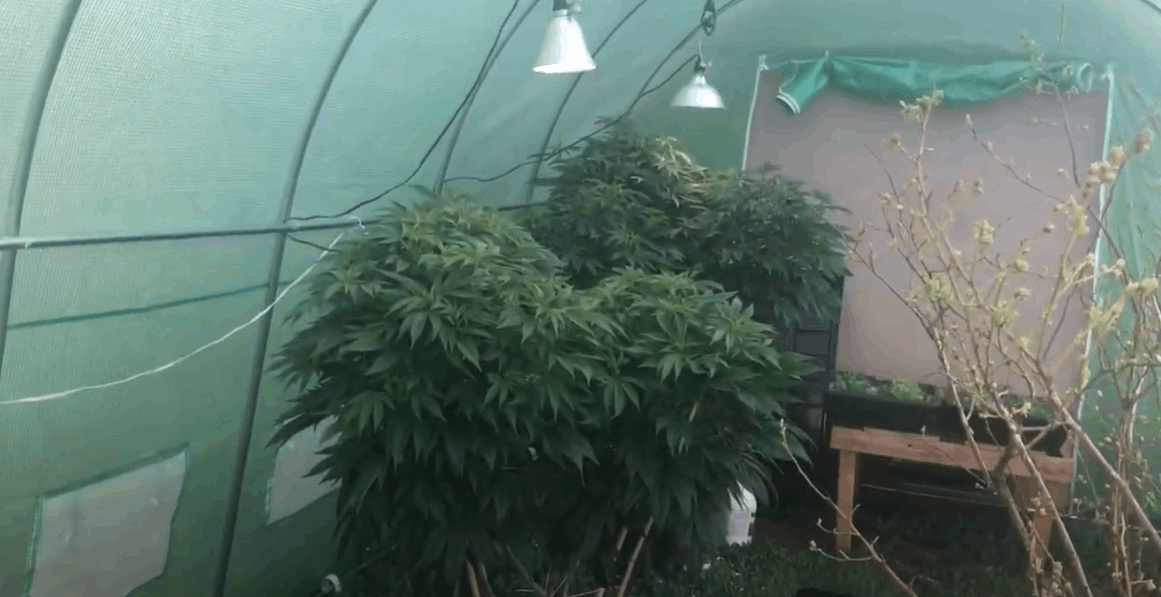
What does this concept have to do with your grow op?
Too low humidity leads to water scarcity. Crops close their pores to guard against this loss, which causes stunted growth and slow maturity. When there’s too much water, soil and plant material become breeding ground for mold and rot. We’ll discuss these health problems later, but the point here is simple. Ensuring the best humidity level for marijuana promotes growth and nips many issues in the bud.
How do you maintain it, though?
There’s no one-size-fits-all answer or the panacea-style best humidifier for cannabis. Rather than sticking to absolute numbers, observe the particulars of your unique garden and respond accordingly. Start by considering these three factors.
Region
To keep things optimal, most people need the best grow room humidifier or dehumidifier. Put your hygrometer to work before you go shopping for one, though. If buying weed seeds in Alaska or Arizona, you already know that you have to work with what you’ve got in terms of the climate. The starting situations in these two regions are very different, though. In simple terms, your location determines your humidity control starting point.
Cooler areas tend to have dry air, so a humidifier is usually necessary to achieve the optimum level. Tropical regions often see sky-high RH levels. While some crops love this, others necessitate a dehumidifier.
Of course, indoor cultivation makes it easier to preserve the best humidity for weed regardless of the climate. Still, your outdoor environment affects the moisture inside your house.
Don’t ignore natural conditions and put all your money on tech. Instead, take them into account while putting together your purchase list.
Genetics
We’ll spend a good section of this guide discussing the optimal humidity for cultivation, but take these numbers with a grain of salt. They’re inferences based on data from thousands of different cultivars. Your weed is only one of those. Its needs might deviate from the standard.
Plus, there’s variance even between the general trends. Notably:
- Indica seeds originate from dry and cool mountain origins. The best humidity for growing weed from this family is lower.
- Sativa seeds first appeared in the tropics. Warm, sticky, humid weather makes crops from this category feel right at home.
It’s ultimately a matter of reading into your strain of choice.
Some are more mold-resistant than others, paying no heed to high moisture levels. Others rot when RH levels surpass a certain percentage point. Genetics ultimately determines the ideal moisture level for each marijuana specimen.
Pro tip: Gadgets help you achieve optimal conditions, but they’re not all-powerful. It’s usually better to stick to strains that at least remotely agree with your climate.
Growing stages
We’ll keep things short here. There’s an entire section about the best humidity for marijuana in each growing stage below.
For now, let’s keep things straightforward — seedlings, vegging plants, blooming crops, and drying buds call for different moisture levels. It’s a matter of their development needs, as water plays a different role in root expansion and bud production.
Generally speaking, you start with the highest RH level and work your way down. By the time you’re processing trimmed buds, the air needs to be as dry as possible.
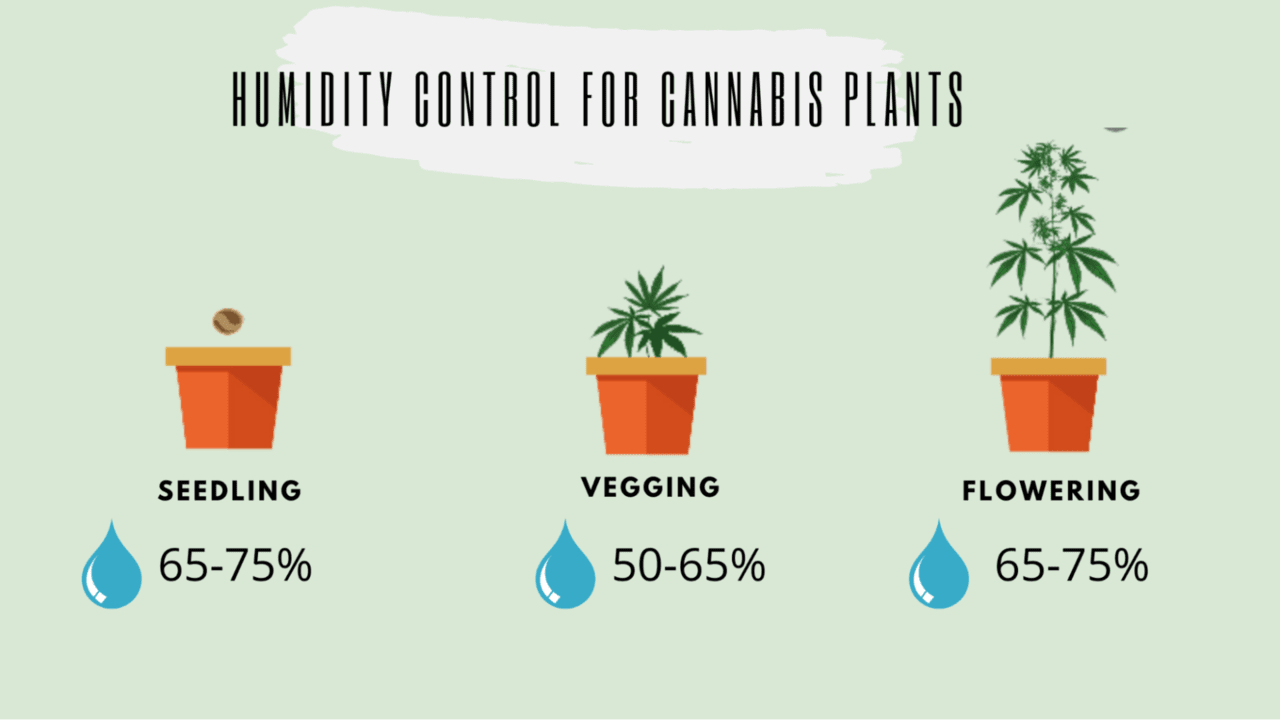
Why is humidity important for cannabis plants?
We understand the considerations surrounding the best humidity for marijuana. Let’s learn why you’d put in the effort to heed them. Two elements come into play, and we have to offer a throwback to your high school biology lessons for the first one. Humidity affects cannabis growth by influencing its respiration process.
Crops feed themselves through photosynthesis and respiration. So, respiration is a part of plant energy production, providing the necessary nutrients for growth. Photosynthesis comes first. Foliage takes in the energy from a light source and produces sugars. Then, the crop needs to convert those sugars into oxygen and fuel to continue developing. It requires carbon dioxide, which it ‘inhales’ from the air via stomata.
Complex organic processes follow; marijuana ‘exhales’ oxygen and retains the rest as energy. But how does this relate to choosing the best humidifier for your grow room? Relative humidity becomes important when the plants intake carbon dioxide.
This process isn’t unilateral. While consuming carbon dioxide, the leaves also release some water into the environment. The amount of air moisture dictates how much the plant discharges.
Two scenarios are possible:
- The air has the best relative humidity for weed, which means it’s pretty humid. The plant loses less moisture and remains in tip-top shape.
- The air is too dry for cannabis, causing significant water loss. Crops either dry or close the stomata, which hinders growth.
In a nutshell, optimal air moisture regulates respiration, and the implications are massive. The subsidiary activities regulate water retention, nutrition, and ultimately, growth.
Tip: Hitting the proper moisture level in the last week can increase cannabis terpenes. You prevent bud rot and boost the flavor profile with one clever move.
Then there’s the second factor—humidity remains crucial after trimming the buds. Preserving the trichomes is vital after you dry and cure your flowers. After all, they contain cannabinoids and terpenes that make weed smoking so enjoyable. Otherwise, potency, fragrance, and even therapeutic properties are lost.
What is the best humidity for marijuana buds post-harvest?
Well, going too low is bad news. Dry air degrades the precious trichomes, dissipating aromatic chemicals and reducing THC and CBD levels. The situation isn’t much better with overly moist environments, either. When that’s the case, mold and bacteria colonize cannabis flowers, contaminating your stash. As a rule of thumb, you want to keep your smokables at 54–63% relative humidity to preserve weight and trichomes and avoid moldy buds.
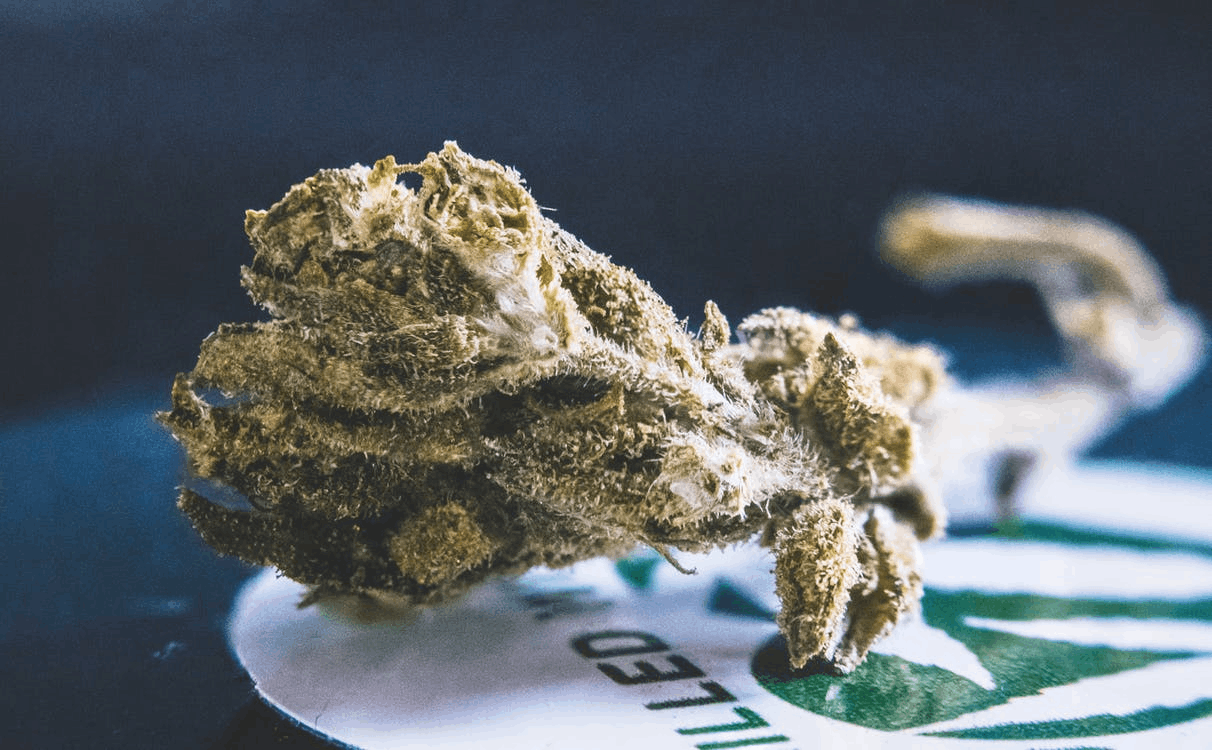
Should humidity be low or high for cannabis plants?
In essence—humidity shouldn’t be too high or too low for cannabis plants. Instead, it should remain consistent and moderate. As we said earlier, too high and too low moisture levels can both cause damage to your marijuana plants. The best humidity for weed is 40–70%, depending on the stage. While that’s sometimes too stifling for humans, your pot crop loves it.
How do you know that you’re hitting that sweet spot? The easiest way to go about it is by observing your garden for moisture issues.
High-humidity environments produce the following telltale signs of trouble:
- White powdery mildew—a fungal disease on young plants and budding crops. It’s easiest to combat it with good airflow and a sturdy dehumidifier.
- Mold and microbial contamination—a pathogen infection with nearly no visible signs but a sharp scent. It can make weed dangerous, so sniff your pot to check for risks.
- Bud rot—exhibits as a white or brown, foul-smelling mass inside the cola. Since this one renders the bud unsmokable, it’s best to prevent it by checking for related issues.
The best humidity for marijuana prevents most of these health risks. What if you go to the opposite extreme, though? When is it time to purchase the best humidifier for growing weed?
It’s a good idea to have one at hand either way but put it to practice if you notice:
- Nutrient burn—displayed as browning or yellowing on the leaves. When the air is too dry, roots rely on soil for water. Since you’re treating that soil with nutes, they may consume too much.
- Wilting foliage and stems—extreme cases of low moisture halt the plant’s life processes. Act immediately to nurse it back to health.
Note: Stunted growth can occur with either extreme, so look at surrounding factors if your crops don’t seem to be thriving.
With all caveats and warnings out of the way, let’s move on to the specifics. What is the best humidity for growing cannabis in each life stage?
The four stages of plant life cycle
Cannabis goes through four distinct developmental stages. And as we’ve mentioned earlier, the optimal humidity isn’t the same when dealing with infant seedlings and bud-laden crops. Requirements shift as plants move from one phase to the next. It makes sense, too. Seedlings have no developed root systems, so they have to get water through their greenery. Crops in late flowering don’t need to grow anymore, so their moisture requirements drop.
Let’s cover the best humidity for growing weed stage by stage.
Pro tip: Mostly, the best temp and humidity for autoflowers correspond to the figures for photoperiod plants.
Seedling stage
The seedling stage starts when your cannabis seed pops and shows its taproot. It lasts several weeks and ends when the two little cotyledons (predecessors to leaves) start turning into actual flowers. The root system gradually starts expanding.
The best humidity for marijuana seedlings is 65–70%. There should be plenty of atmospheric moisture for the canna-baby. Temperatures of 65–80° F assist development.
Vegetation period
The vegetative stage lets roots develop and stretch. Crops initially rely on foliage but later develop a robust system to uptake most water from the soil.
The foliage gets greener and larger as well. So some evaporation levels cool the crop and allow the leaves to remain moisturized while growing and developing. In vegging, the best humidity for weed begins at 70% and gradually drops as the crop nears flowering.
Keep it high while your plant is still small and lower by 5% each week until you reach about 45%. If you’re not yet ready for flowering, maintain 45% RH before flipping the lights. Temperature ranges can remain the same as with seedlings. High temps increase air moisture and promote absorption.
Flowering period
The flowering period is when the plants cease developing the stem, branches, and leaves. Water and nutrients now go towards the cola, where bud sites eventually appear. Moderation is vital in this stage. Excess heat and moisture can damage sensitive flowers and hinder the productivity of your growing operation. Bud sites require less moisture, so the best humidity level for marijuana in blooming is consistently below 60%.
This figure is strain-specific—some cultivars need even below 40% for optimal growth. Dry air combines well with temperatures at 68–79°F.
Late flowering (1–2 weeks before the harvest)
Altering moisture levels in the final two weeks of flowering isn’t necessary. You can maintain the conditions from the previous stage and get high-quality results. Tweaking might improve yield size, flavor, potency, and appearance, though. Notably, sudden lowering of temperature and humidity pushes your cannabis plants into panic mode. They believe that winter is coming sooner than expected. As a response, they produce larger flowers covered with more trichomes.
Sounds cruel? Maybe, but you’ll love the results.
The best humidity for weed in late flowering is 30–40%. It works best in combination with temps maxing at 75° F during the daytime and 60° F at night.
What are weed humidifiers and their types?
You now have a complete picture of the optimal humidity for your crops. All that’s left is to follow instructions and ensure the perfect environment to help them ripen. How do you establish and manage the best humidity for marijuana? There are several natural ways to alter air moisture, but humidifiers are quicker and more effective. These appliances release water or vapor into their surroundings to increase the humidity levels of your grow space.
There are several types of this device, some for small-scale growers and others for commercial operations. Most shops divide them into these five types:
- Ultrasonic humidifiers are small, safe, and quiet. They can release warm or cold mist to raise or reduce the temperature for bonus points.
- Cool mist humidifiers are suitable for warm rooms and large spaces. They draw the air from the atmosphere and blow it over a water source.
- Warm mist humidifiers are the most accessible models, perfect for cold spaces. They heat water internally before releasing it into the air.
- Evaporative humidifiers are generally the cheapest and most straightforward. They don’t target the temperature, changing only the moisture levels.
- Airwasher humidifiers are the priciest and highest-tech option. They add moisture to the air while removing pollen and other airborne particles.
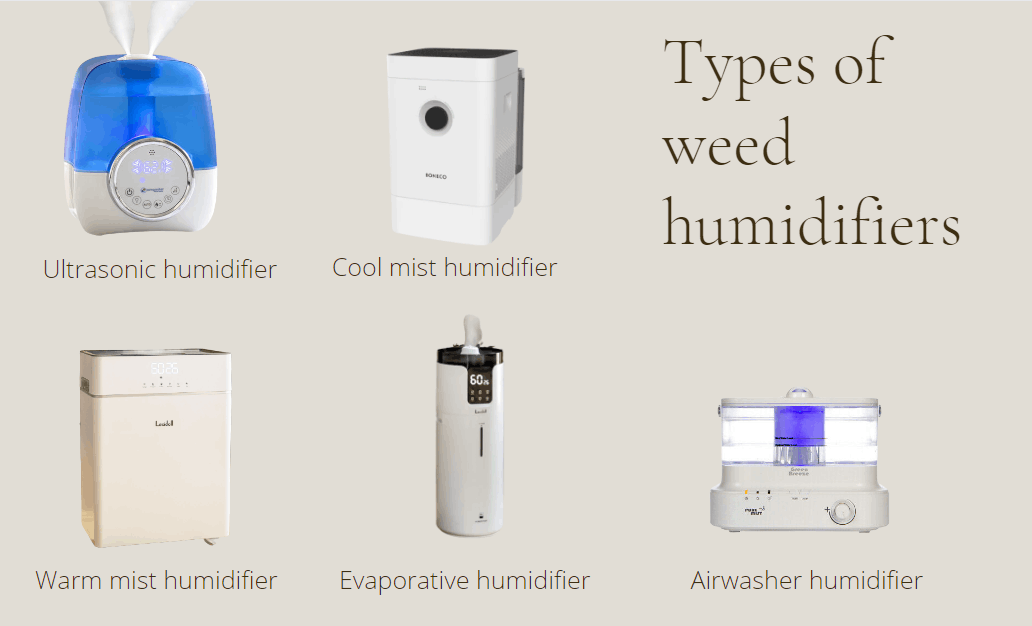
In general, ultrasonic is the best all-in-one solution, while warm mist suits most American areas. Choose one according to your needs, or DIY one at home.
Creating a homemade humidifier for indoor weed
The best grow room humidifier goes a long way for your overall setup. You sometimes need a quicker and more accessible (but equally effective) solution, though. Whether you’re looking for a quick way to fight heat stress or dry stems, here’s what you can do:
- Get a large bucket and a fluffy towel.
- Line the inside of the container with the cloth, letting it drape over the sides.
- Fill the bucket with water. Let the towel get damp all around.
- Place the structure before a ventilator and create a light breeze.
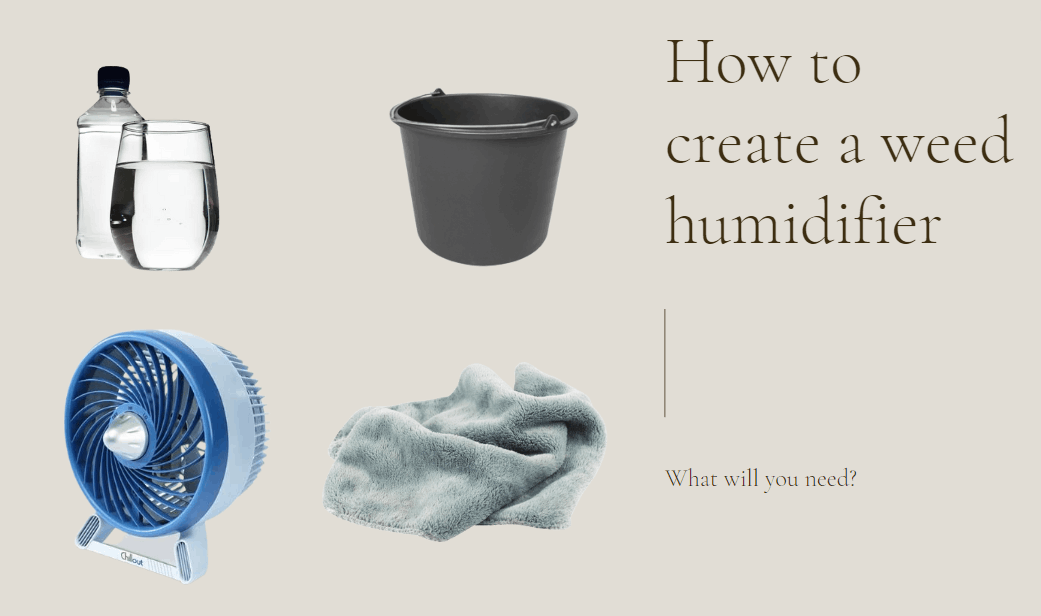
This ‘humidifier’ won’t shut down automatically, so keep your hygrometer on hand. Change the towel every five days and wash the old one immediately to avoid bacteria growth.
Best humidity for healthy weed
In the end, understanding humidity can take your cultivation game to the next level. Nail this element to see thriving plants and encounter fewer harvest-ruining health issues. Don’t be afraid to use the amenities of the modern growing industry. The best humidifier for cannabis, quality fans, and an accurate hygrometer facilitate your task list and boost yield quantity and quality.
It’s time to put your knowledge to good use. Visit our shop, choose a strain you like, buy weed seeds, and grow top-tier weed at home. Stay tuned to our blog for more guides on cultivation and consumption. This resource covers all things 420, from picking cannabis seeds to smoking weed—and beyond.

 THC
THC